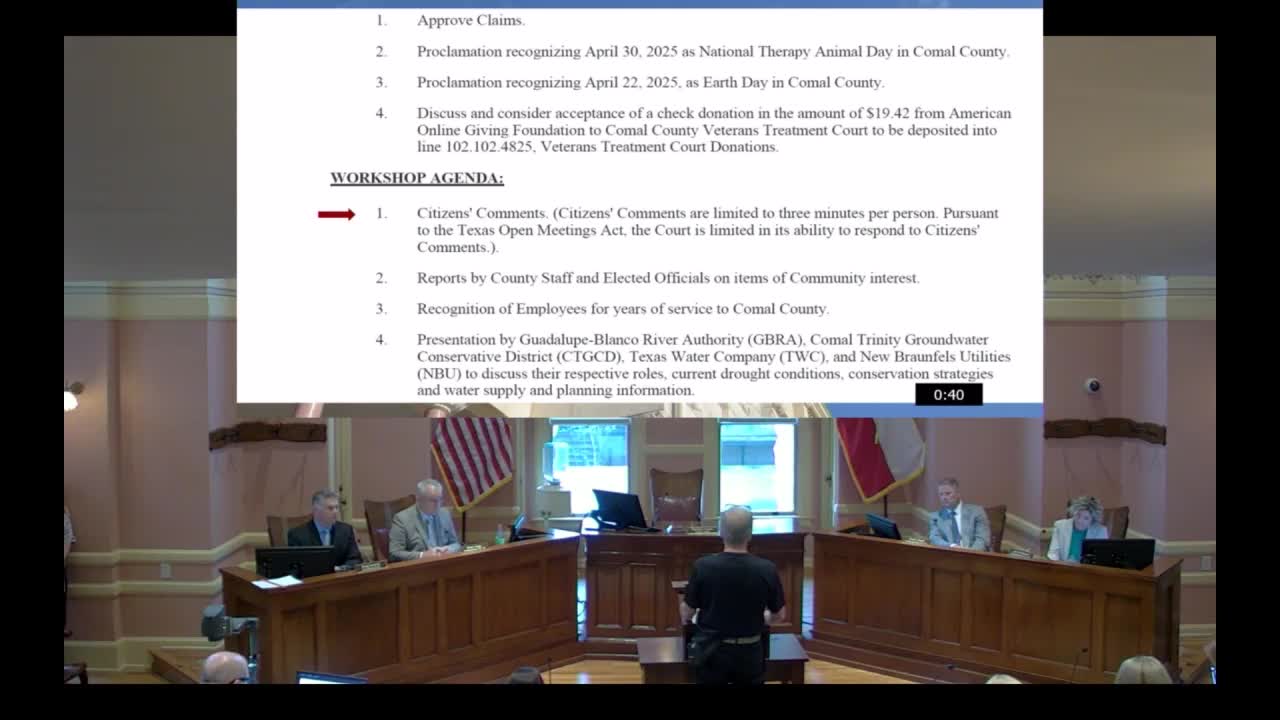Texas Senate passes bill to tighten water availability regulations for new subdivisions
April 17, 2025 | Comal County, Texas
Thanks to Scribe from Workplace AI , all articles about Texas are free for you to enjoy throughout 2025!

This article was created by AI using a video recording of the meeting. It summarizes the key points discussed, but for full details and context, please refer to the video of the full meeting. Link to Full Meeting
Linda Sisk, a local resident, stood before the commissioners, her voice tinged with urgency as she painted a stark picture of the ongoing drought. "We are in year six of a period where five of those years have seen below-average rainfall," she stated, highlighting the alarming state of Canyon Lake, which experts estimate would require a staggering 60 inches of rain to return to full capacity. The implications of this water scarcity are profound, especially as Comal County experiences rapid growth, further straining its already limited resources.
Sisk's testimony underscored a critical point: the current water availability reports for new subdivisions are questionable at best. She referenced Senate Bill 1855, which aims to tighten regulations on these reports, emphasizing the need for credible assessments before approving new developments. The bill, which passed the Texas Senate unanimously, empowers county commissioners to enforce stricter water availability requirements in areas designated as priority groundwater management zones.
The urgency of the situation was palpable as Sisk urged the court to reconsider the approval of new housing developments that do not align with sustainable water practices. "The continuing approval of 2,000 square foot houses on 5,400 square foot lots has to stop," she declared, calling for a more responsible approach to growth that prioritizes the county's water sustainability.
As the meeting progressed, the stark realities of water management in Comal County became increasingly clear. With the Guadalupe River drying up and evaporation rates rising, the community faces a critical juncture. The discussions held in the Commissioners Court not only reflect the immediate concerns of residents but also signal a broader need for sustainable planning in the face of climate challenges. The decisions made today will undoubtedly shape the future of Comal County's water supply and the well-being of its residents for years to come.
Converted from Comal County Texas - Commissioners Court - Apr 17, 2025 meeting on April 17, 2025
Link to Full Meeting
Comments
View full meeting
This article is based on a recent meeting—watch the full video and explore the complete transcript for deeper insights into the discussion.
View full meeting